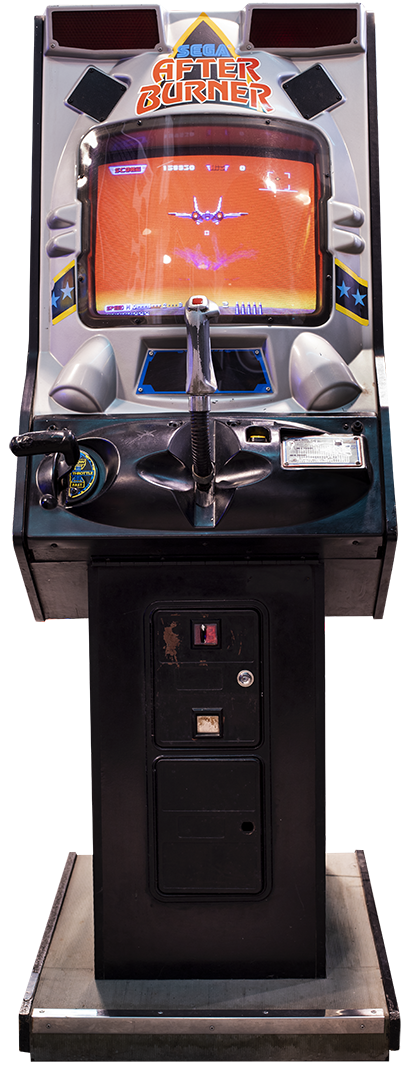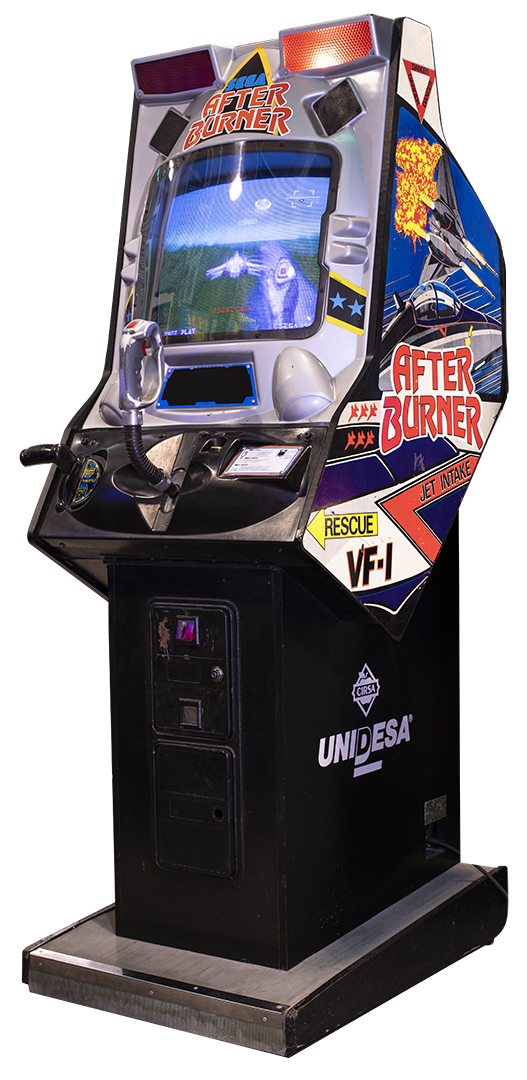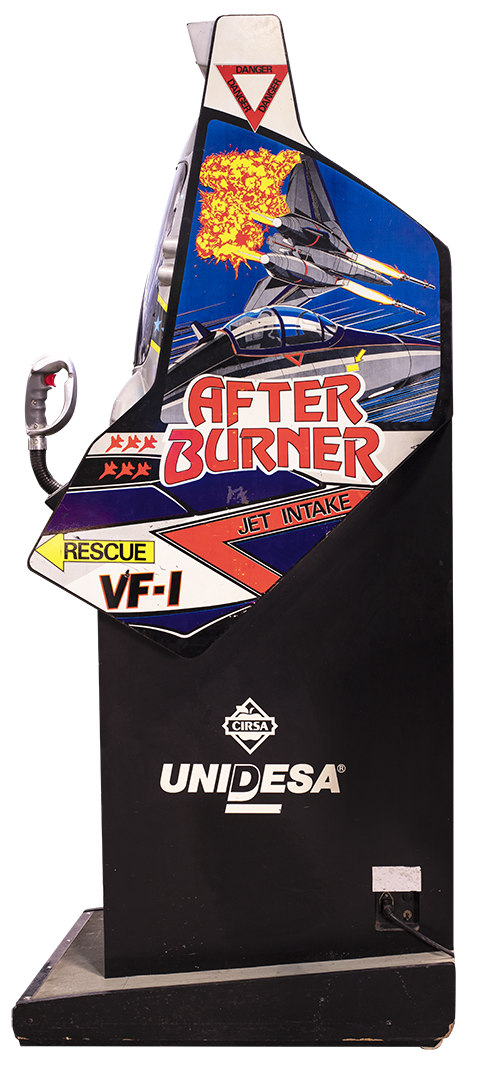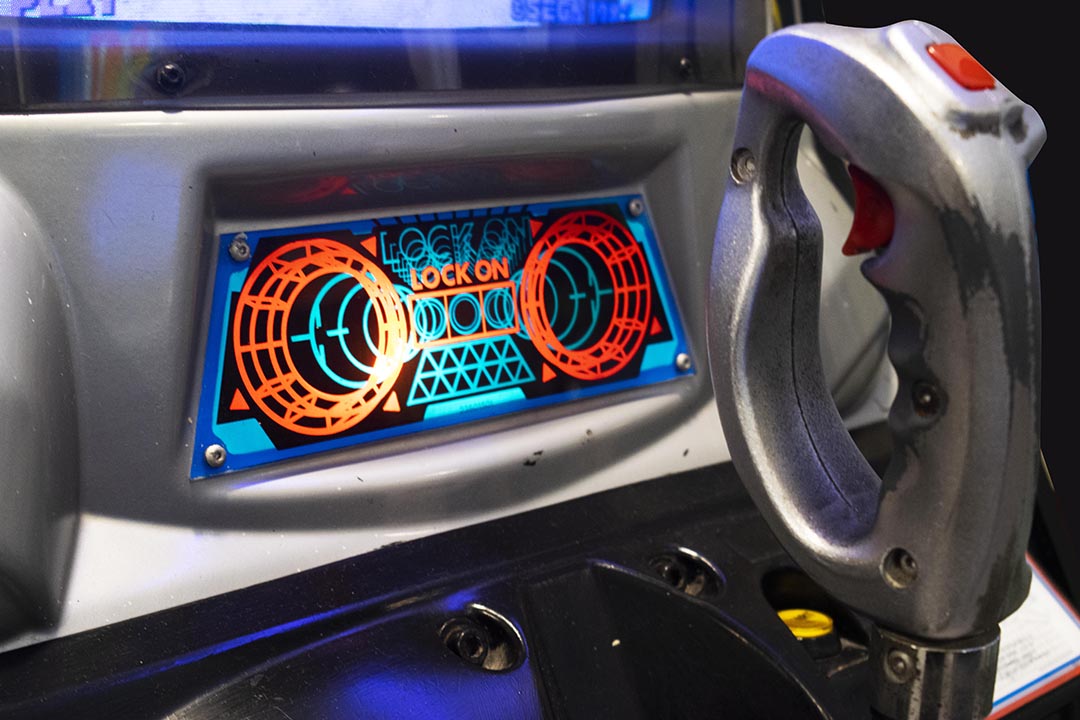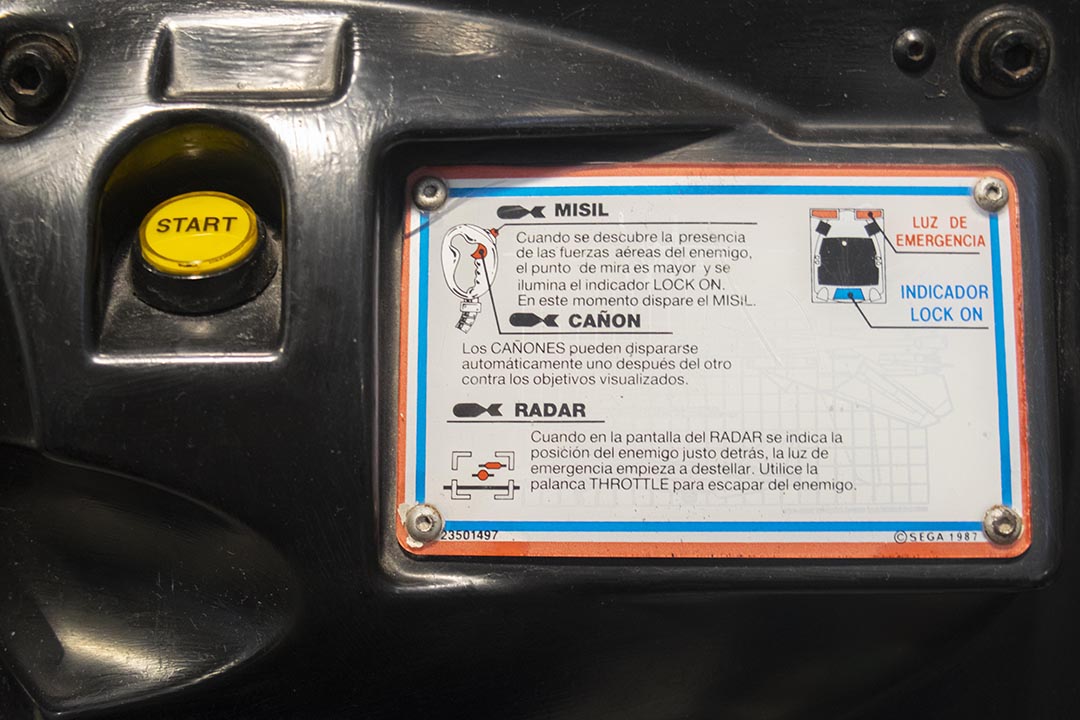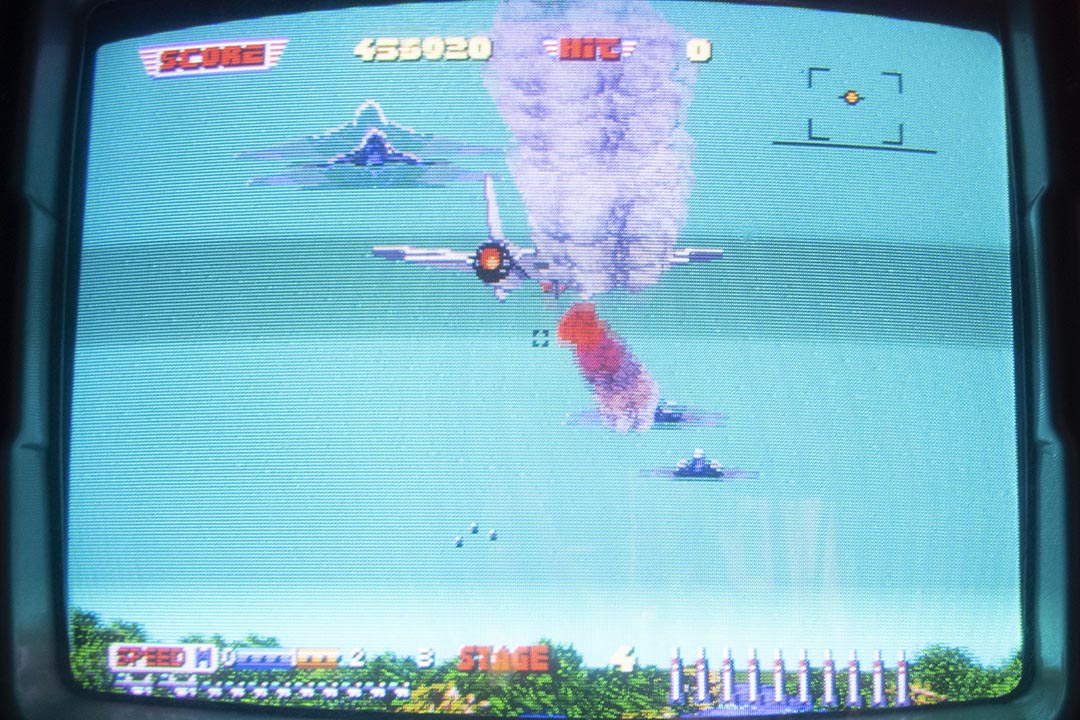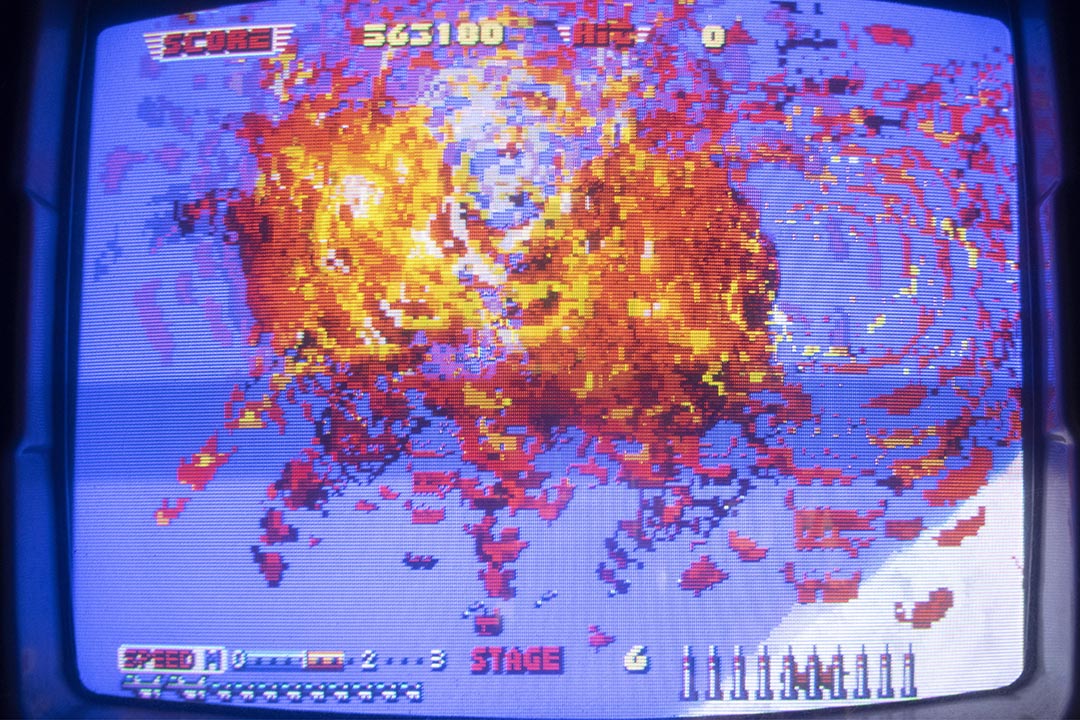
AfterBurner
Video of the Arcadeology Channel
TECHNICAL DATASHEET
Game name: AfterBurner
Manufacturer: Sega
Year of development: 1987
Category: Third person rail Shooter
Hardware Platform Info: Called Sega X BoardSystemy also used in other titles such as AB Cop, SuperMonaco GP or Thunder Blade.
- Main CPU: 2 x MC68000 @ 12.5MHz
- Sound CPU: Z80 @ 4Mhz
- Sound Chip: YM2151 @ 4MHz y Sega PCM @ 15.625 MHz
- Video Resolution: 320 x 224
Main developer: Sega-AM2
Music composer: Hiroshi Kawaguchi (S.S.T. Band)
GAME STORY
History of development:
The origin of AfterBurner is in the personal experience of its creator, Yu Suzuki, when in Florida (United States) he had the opportunity to fly in a real combat fighter accompanied by an instructor. Along with them, a second aircraft piloted by another instructor flew with which they simulated real combat, since both planes were equipped with blank weapons (laser machine guns and smoke bombs). If a laser touched the opponent, a smoke bomb was activated, indicating that the shot had been accurate. For almost two hours they were flying and shooting at each other. It was then that Yu Suzuki realized that the flight simulators that had hitherto been released were too complex, ruining the combat experience. He went on to state, "All of those flight simulators were created by people who have never flown in a real fighter."
This experience, coupled with the popularity of Tom Cruise's 1986 film Top Gun, was the inspiration for the game's creation.
Game Overview:
In game, we take on the role of an F-14 Tomcat fighter pilot who basically has to shoot down enemy planes while dodging missiles and firing at them, until the end of each phase.
The plane has a third-person view from behind. AM2 once again uses its Super Scaler technique to achieve a sensation of speed and amazing "3D" for the time.
It is controlled with two levers that reproduce those of a real plane, one for movement and firing (with a trigger for the Vulcan machine gun and a button for launching missiles) and another to control the speed of our plane as a gas lever (throttle).
There are three versions of the machine, being without a doubt the Deluxe the most spectacular and the one that marked a milestone in the arcade world. This version simulates the entire cockpit of a fighter that rotates both left and right and up and down emulating the movement of plane on screen. Such was realism achieved for the time that for a long time it was the queen of arcade lounges for its spectacular nature.
Another less extended version is the Standard, which has a seat, but the movement is limited to left and right. Finally, there is the Upright version, in which we play standing in front of the screen.
Curiosities:
The original version of AfterBurner was only released in Japan. A few months later, AfterBurner II arrived in the rest of the world, which, more than a sequel, was an improved version to which the throttle had been added, more levels (from 18 to 23) and some graphic and sound improvements.
In intermediate scenes of the game there is some curious cameo like the Ferrari of Out Run or the Hang-On motorcycle.
It was the first machine to use the Sega X Board System board.
HISTORY OF THE MACHINE IN ARCADE VINTAGE
Status: OPERATIVE
Information on the location and purchase of the Vintage Arcade Machine:
Jose Mª Litarte traveled to Cartagena, in June 2014, to purchase a pinball from an operator. The machine was next to the 4-player Teenage Mutant Ninja Turtles. He could not resist and acquired both.
Pending repairs or restorations:
The missile button fails from time to time you have to change the mike.


